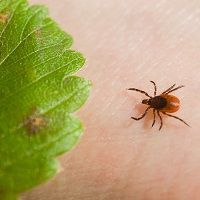Article
Large-Scale Study Supports Controversial Biodiversity-Disease Theory
Author(s):
Tying wildlife to infectious disease, researchers from the University of South Florida recently reported that there is an inverse relationship between biodiversity and disease outbreak, affecting both humans and animals.

Tying wildlife to infectious disease, researchers from the University of South Florida (USF) recently reported that there is an inverse relationship between biodiversity and disease outbreak, affecting both humans and animals.
Their study, published in Proceedings of the National Academy of Sciences. (PNAS), supports a contentious line of thought called the “dilution effect hypothesis,” which according to Stanford University is: “Biodiversity — typically measured by species richness, or the number of different species present in a particular spatially defined locality — is protective against infection with zoonotic pathogens.”
Coined by Richard Ostfeld and his colleagues from the Cary Institute for Ecosystem Studies in NY, the theory was created after observing Lyme disease’s complex spreading mechanisms.
Testing this theory, the team conducted a meta-analysis of 202 cases of biodiversity and disease, where they affirmed that host diversity essentially limits parasite frequency. They also noted this relationship was independent of host density, study design, and type and specialization of parasites — specifically whether they infected humans or wildlife.
“However, the magnitude of dilution was more closely related to the frequency, rather than density, of focal host species. Importantly, observational studies overwhelmingly documented dilution effects, and there was also significant evidence for dilution effects of zoonotic parasites of humans,” the writers noted.
Since this association exists regardless of the abundance of parasites that infect humans or wildlife, the study lead author, David Civitello, postdoctoral researcher in the Department of Integrative Biology at USF, this indicates that humans could play a positive role in controlling the parasite population. However, humans also can further spike their prevalence due to their role in decreasing biodiversity.
The team believes their findings refute one criticism of the dilution effect hypothesis which is that it only applies to a small amount of parasites, as they studied 61 parasite species. Most importantly, the USF study may bridge the gap between an ecological and a public health issue.
“Our results highlight the need to move beyond debates over the generality of the dilution effect toward a mechanistic, predictive framework for biodiversity-disease interactions,” said Civitello. “Nonetheless, a greater understanding of the mechanisms underlying dilution effects is still needed to maximize the chances of designing successful control programs for specific parasites or herbivores.”





